LG OLED55CX Review
Another outstanding OLED TV from LG
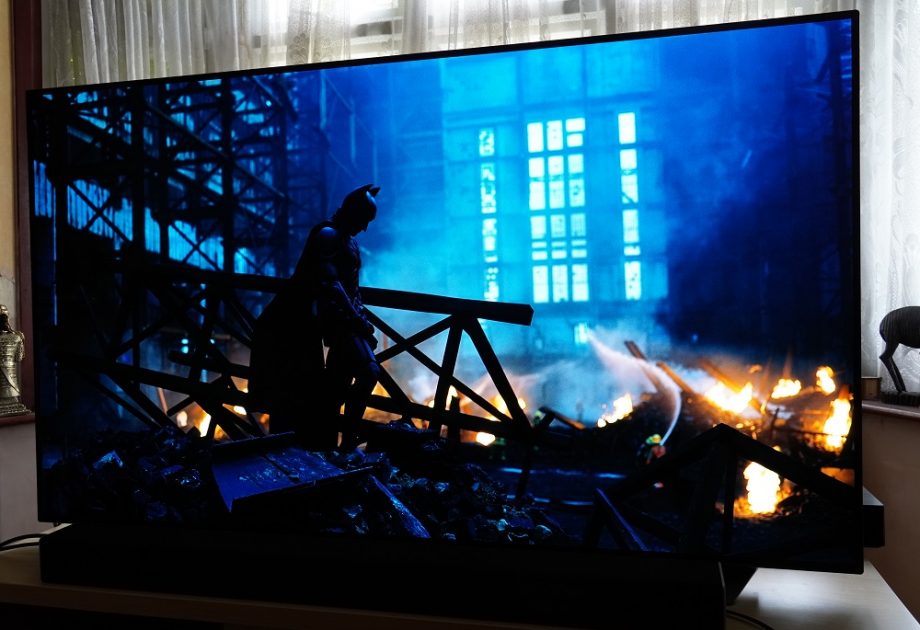

Verdict
The overall performance isn’t a huge leap over the C9, but that said, the CX is an excellent all-round package. Picture quality is outstanding, webOS is full of content, and the level of customisation and various AI-enhancements make this a sure-fire winner.
Pros
- Excellent picture quality
- Great design
- Plenty of smarts, features and customisation
- Excellent upscaling
Cons
- Still missing a few UK catch-up apps
- Just a small leap over the C9
Availability
- UKRRP: £1799
- USARRP: $1800
- EuropeRRP: €2300
- CanadaRRP: CA$1899
- AustraliaRRP: AU$3959
Introduction
The LG CX OLED (LG OLED55CX) is the South Korean manufacturer’s mid-range OLED for 2020, bringing new features to table at a more affordable price than the 2019 C9.
The first OLED TV to ever go on sale was from Sony. The XEL-1 had a screen size of 11-inches and a native 960 x 540 resolution. All that real estate would have cost $2499.99 back in 2008.
Fast-forward to 2020 and LG’s C-series OLED shows how far the screen technology has come. Perfect black levels, rich contrast, slim design and a boatload of smarts for the sum of £1799.
LG hasn’t reinvented the OLED wheel with the CX, but it has nudged it far enough to extract even more performance from its mid-range OLED.
Design
- Similar in looks to the C9
- Assembly requires not to damage screen
- Magic Remote with click and pointer
There’s little difference between the LG CX and the 2019 C9 but take nothing away from its looks. The CX is another sleek, minimalist set that would make any room more attractive.
The CX’s screen measures at 46.9mm with the bottom rear panel – where the 40W speaker system, α9 Gen3 AI Processor and physical connections reside – adding some girth to the CX’s waistline. If you include the stand the CX is 1228 x 738 x 251mm (whd).
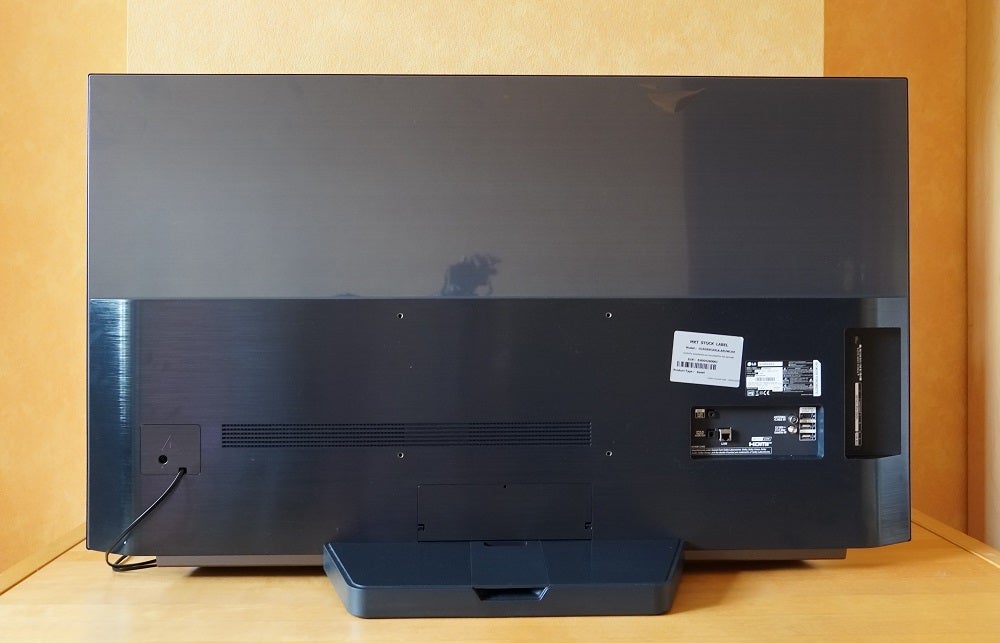
The screen sits on a central stand, which acts as a counterweight so the screen doesn’t topple over. Assembly requires two people, though you could get by with one despite the 55-inch version tipping the scales at 23kg. Putting the TV together is a relatively simple process of attaching the central stand and plinth to the main body. Like all OLED screens, assembly requires care to avoid damaging the screen.
The CX comes packed with the Magic Remote. LG doesn’t supply any other remote with its OLEDs, so if the point-and-click nature is too fiddly, the size of the on-screen pointer and responsiveness can be tweaked in the settings. The remote has hotkeys for Netflix, Amazon Video and Rakuten (via the Movies button).
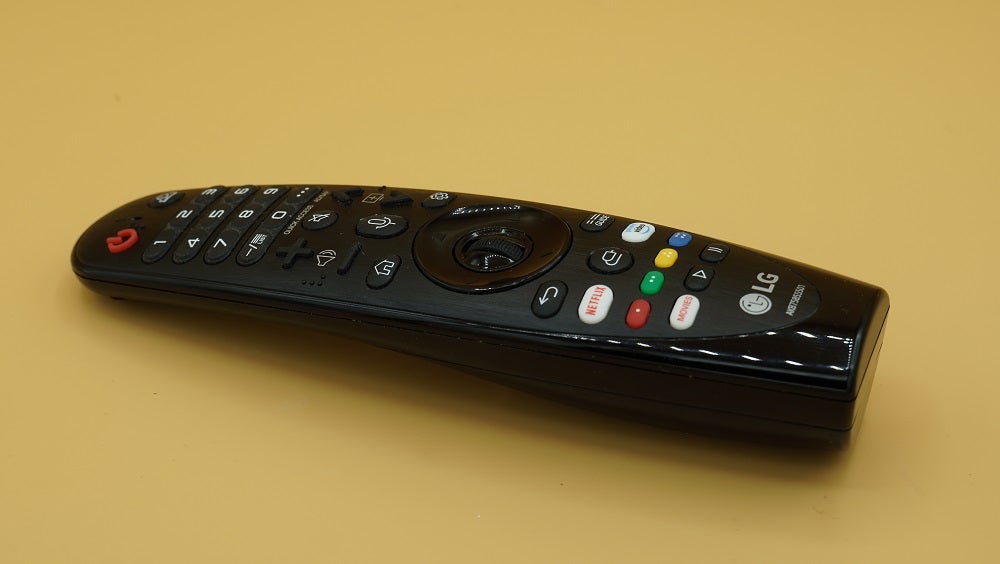
Features
- 4K@120Hz compatibility for gaming
- Filmmaker Mode and Dolby Vision IQ
- Supports WiSA wireless standard
Rear-facing connections include a headphone out, Digital optical out, Ethernet, satellite and aerial inputs, 2x USB and a HDMI 2.1 connection. The side-facing connections cover the rest of the HDMI 2.1 connections, a USB port and a CI+ 1.4 (Common Interface) slot.
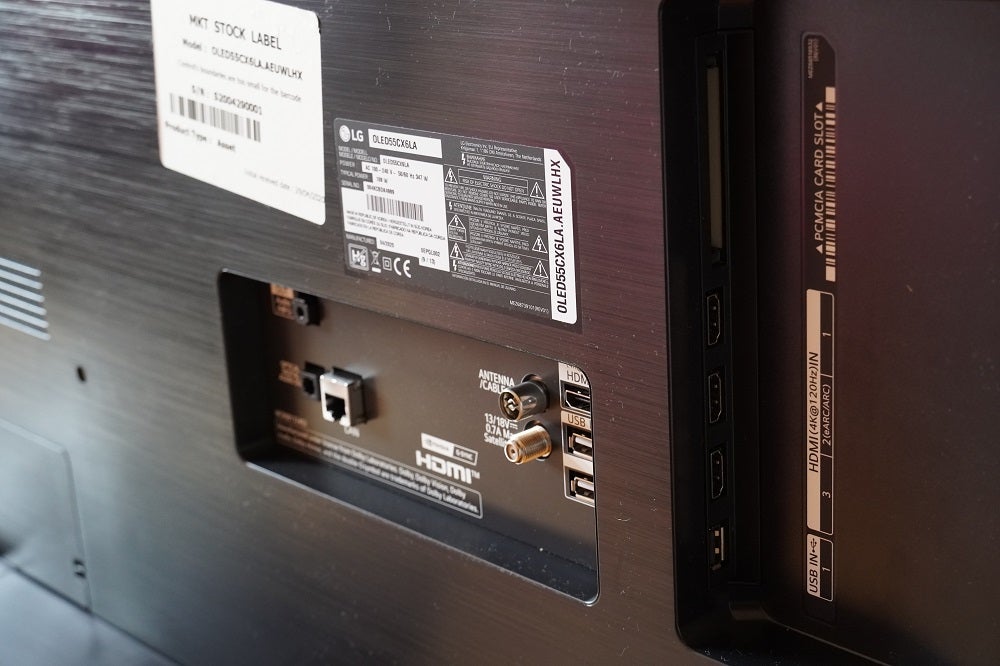
All four of the LG CX’s 2.1 HDMI ports offer 40Gbps of bandwidth compared to the full 48Gbps of the 2019 OLED range. As full bandwidth is only needed for resolutions and frames rates for 8K, it’s nothing to be sore about.
HDMI 2.1 brings eARC, ALLM (Auto Low Latency) and VRR (Variable Refresh Rate) into play. The first ensures pass-through of lossless audio (such as Dolby Atmos) to an external speaker. ALLM means the OLED55CX’s display automatically engages the display’s lower latency when connected to a game console; VRR syncs the display to match the console’s frame rate for less tearing and stutter. This, alongside 4K@120Hz (HFR) compatibility, ensures the CX is suited to cope with the PS5 and Xbox Series X.
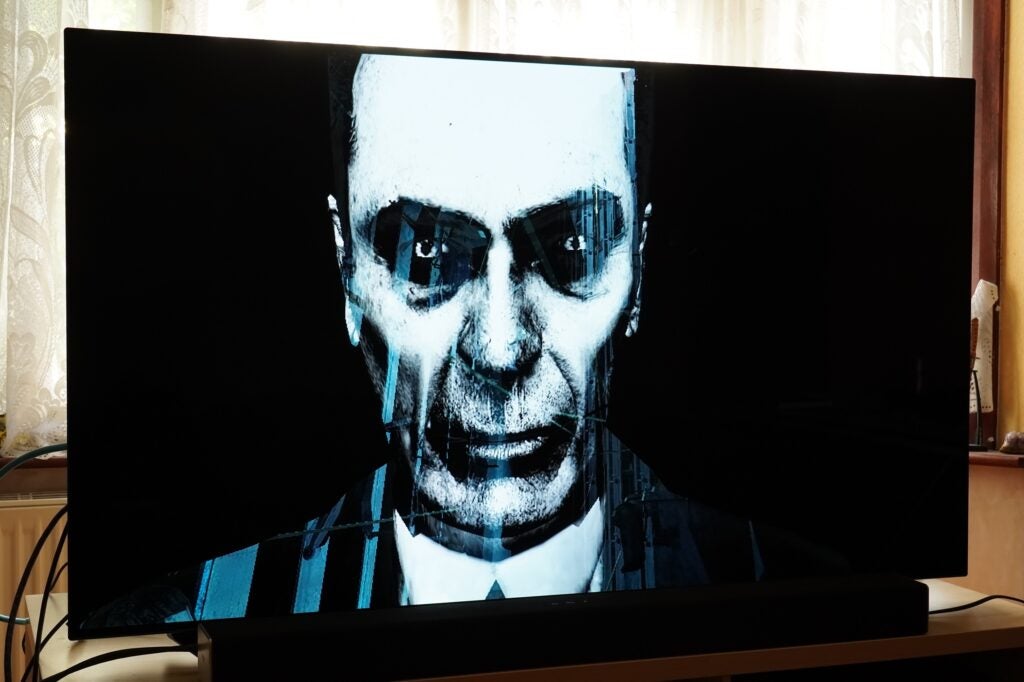
There’s more VRR technology in NVIDIA G-Sync and AMD FreeSync Premium, which produce less stutter and flicker with PC games. The TV also meets the HGiG’s (HDR Gaming Interest Group) standard for consistent HDR gaming performance. The LG CX’s Gaming mode is fleet-footed, though there is some flicker when playing The Division 2. LG claims the OLED55CX offers 12.7ms of lag. Tests only recorded 13ms, but let’s not split hairs over 0.3ms. Since its release, the CX has become the official TV for the Xbox Series X.
New for 2020 is Filmmaker Mode and Dolby Vision IQ. The picture mode is backed by the UHD Alliance, Hollywood creatives and most TV makers and it disables picture enhancements and preserves a film’s creative intent.
Cinema mode Filmmaker Mode

Filmmaker Mode is best viewed in darker conditions (to reflect the environment the film/show was graded in), and works across SDR, HDR10 and HLG formats (it won’t appear when Dolby Vision is enabled). LG’s implementation allows for it to be switched on or off, but there’s no content available with the metadata tag to take advantage of it now.
Dolby Vision IQ uses the TV’s light sensors to detect changes in a room’s ambient light; optimising brightness, colour and contrast of Dolby Vision HDR content. IQ can’t be switched on or off as it doesn’t feature in the menus. LG’s implementation relies on the AI Brightness mode, enabled by default with the Dolby Vision Cinema Home mode. I can’t say I noticed IQ much during testing, so think of it as a nice rather than essential feature.
LG has employed various solutions to deal with OLED burn-in such as a screensaver mode and pixel shifting. If the TV is used responsibly, image retention shouldn’t be an issue.
The LG CX Dolby Atmos compatibility. Also supported is Bluetooth Surround Ready, which means two compatible speakers of the same model can be added as rear speakers (such as the XBOOM PL7). Continuing from 2019 is WiSA (Wireless Speaker & Audio), which removes the need for cables/receivers by connecting to compatible wireless speakers. Bang & Olufsen, Harman Kardon and Klipsch have WiSA-ready speakers and subwoofers available.
Interface
- Comprehensive app support
- No Freeview Play
- Wide wireless connectivity
The LG CX arrives with plenty of smarts that cover pretty every conceivable angle. WebOS and ThinQ AI build upon the 2019 version, furnishing the TV with a few new adjustments and customisations to tailor the experience. Alexa and Google Assistant are the choices for hands-free voice operation.
webOS remains the fluid, tile-based interface that’s responsive and easy to navigate. AI Preview and Intelligent Edit continue, while menus also feel less byzantine than last year.
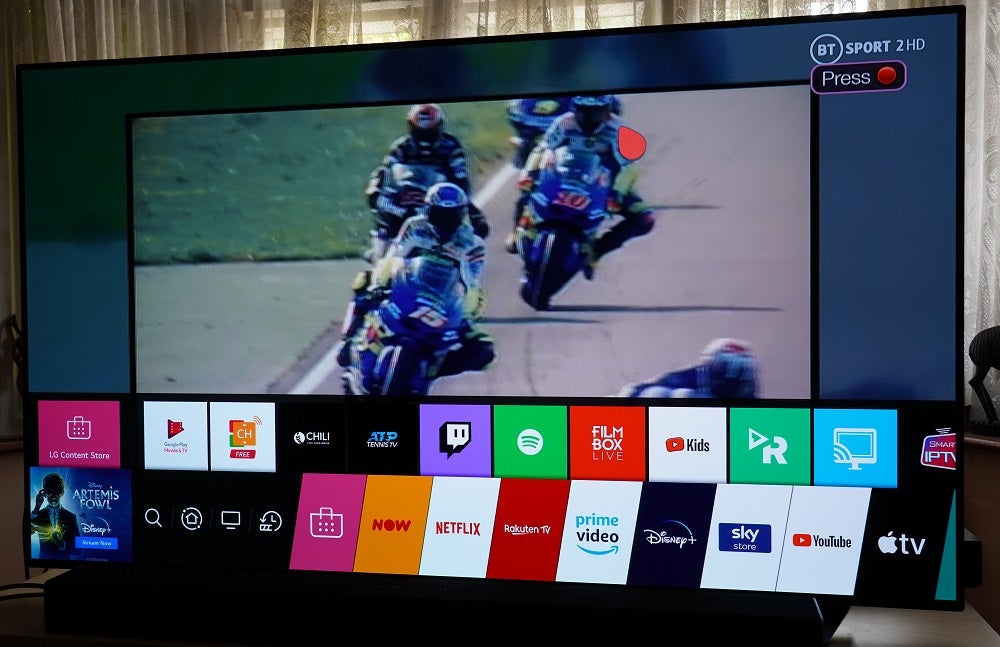
Set-up is swift, and you’ll be guided through a process that automatically detects any connected devices. You’ll also have the chance to switch on AI-enhancements in AI Picture Pro, Brightness and Sound. To get the picture quality enhancements, Picture Pro must be switched on.
There’s a wide selection of apps that includes Apple TV+ (which can now pass through Atmos), Disney+ and NOW TV are supported. LG Channels offers a curious selection of 50 channels that includes Classic Cars, Futbol Mundial and The Hollywood Reporter.
What you won’t get is Freeview Play. BBC iPlayer was added at the end of August 2020, and since then ITV Hub and All4 have been added as apps to the LG app store. There’s still no word on when the rest of the apps will follow.
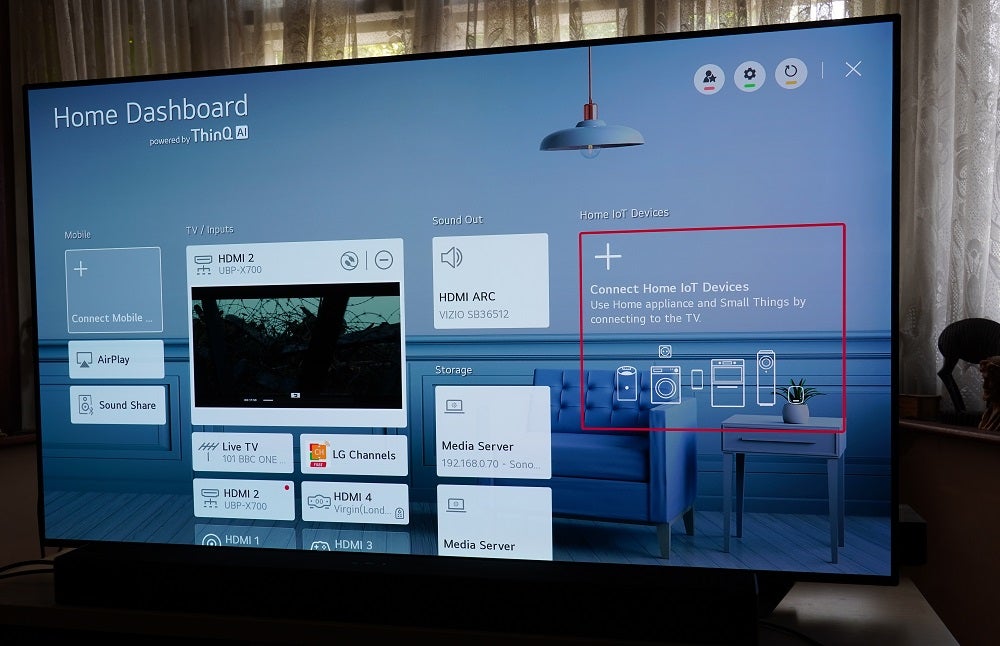
The Home Dashboard is the hub for all inputs, outputs and Internet of Things (IoT). From there you can access content on linked media servers (DLNA), switch between inputs, preview those inputs via picture-in-picture and manage connected devices through Wi-Fi, Bluetooth 5.0, AirPlay 2 and Apple HomeKit.
Annoyed by those pesky ads on the home tiles? They can be switched off in the settings. Want to keep up with your favourite sports teams? You can create an alert to stay abreast of what’s happening. And that is the breadth of the LG CX’s smart offerings.
Picture quality
- Impressive upscaling
- Excellent contrast and black levels
- Good motion
The LG CX boots up in Eco mode but switch to Standard and it delivers a very impressive image. There’s an innumerable of picture modes to choose from, with Vivid at one end to the two ISF modes (Bright and Dark) at the other.
The α9 Gen3 AI Processor offers improved upscaling performance, especially with faces. HD images are full of bold colours and contrast; textures are detailed, surfaces are convincingly conveyed and tonally it’s on point. It’s not necessarily the sharpest image, but it’s a remarkably strong performance.
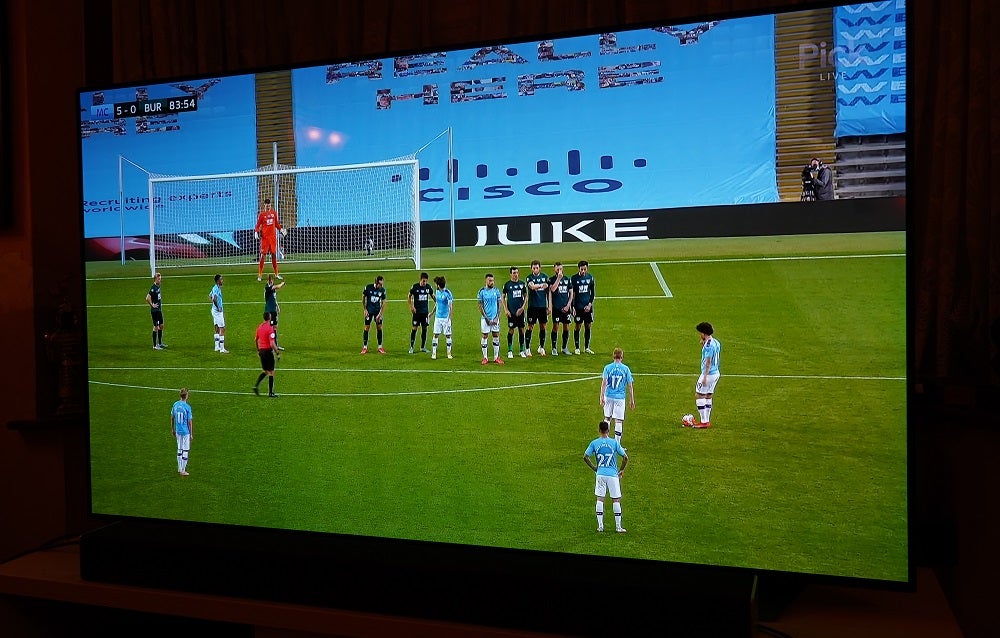
The α9 Gen3 processor is also deft when it comes to motion-handling. Watching Manchester City vs Burnley and there are no distracting artifacts, with the OLED55CX able to keep track of fast-moving action without succumbing to ill-fated blur.
Even SD is displayed with a sense of heroism. Despite the drop in quality, pictures are still watchable. There are predictable issues with halos around objects and people, as well as a softness and lack of detail, but it’s better than it has any right to be.
HD SDR SD SDR

Complexions can be shiny but setting Noise Reduction/MPEG Noise Reduction to Auto reduces this. It’s worth moving Smooth Gradation to low, setting Dynamic Contrast at low and putting TruMotion’s De-judder at 4 and De-Blur at 10 for sub-4K content, though it’s worth playing around for a look you favour. Don’t bother with OLED Motion Pro as it makes the image darker.
New for 2020 is Peak Brightness. Turn it off and the TV offers deeper blacks. Set it to high reduces black levels but pumps up the overall brightness.
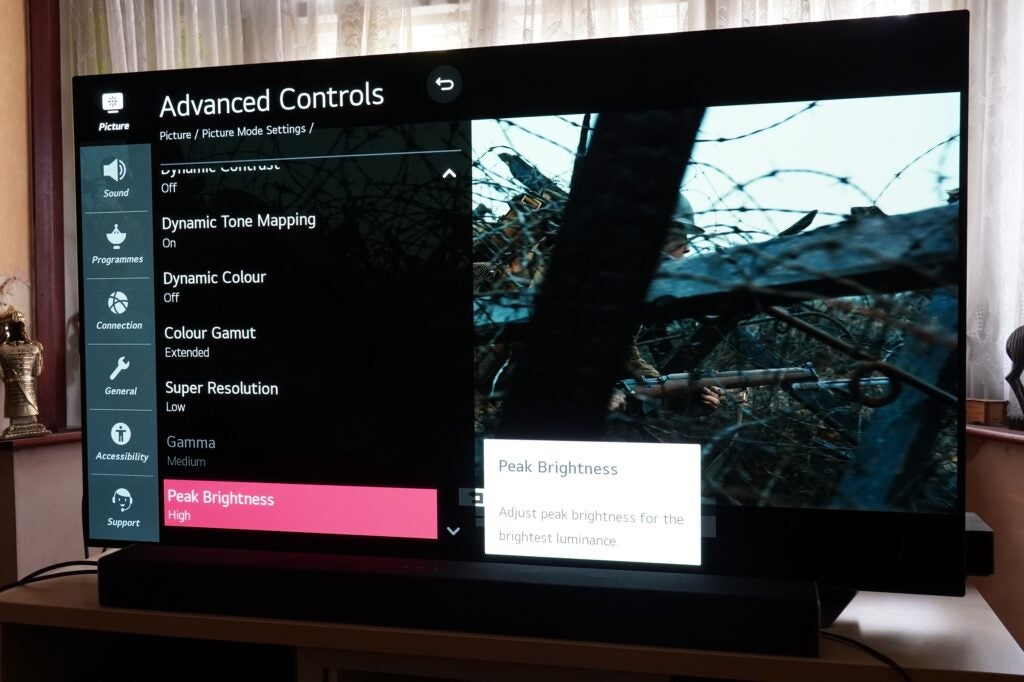
HDR10, Broadcast HLG (supported by BBC iPlayer and Sky Q) and Dolby Vision HDR are supported. The lack of HDR10+ is an annoyance but not unsurprising. For completeness sake, it would be welcome.
Even so, with 4K content the LG CX takes off. Black levels are impressively deep, but still provide detail in the darkest parts. Contrast is superb, making for suitably rich and dramatic presentation. While it’s not the brightest OLED, it feels brighter than the C9/E9. There’s a naturalness and vibrancy to the CX’s colours and tones that’s exquisite to view.

OLEDs ability to place bright and dark pixels together makes for dynamic looking images. The scene where the predator is hunting after Schwarzenegger’s Dutch illuminates the OLED screen with pin-point precision. Dark scenes with bright elements are particularly dazzling.
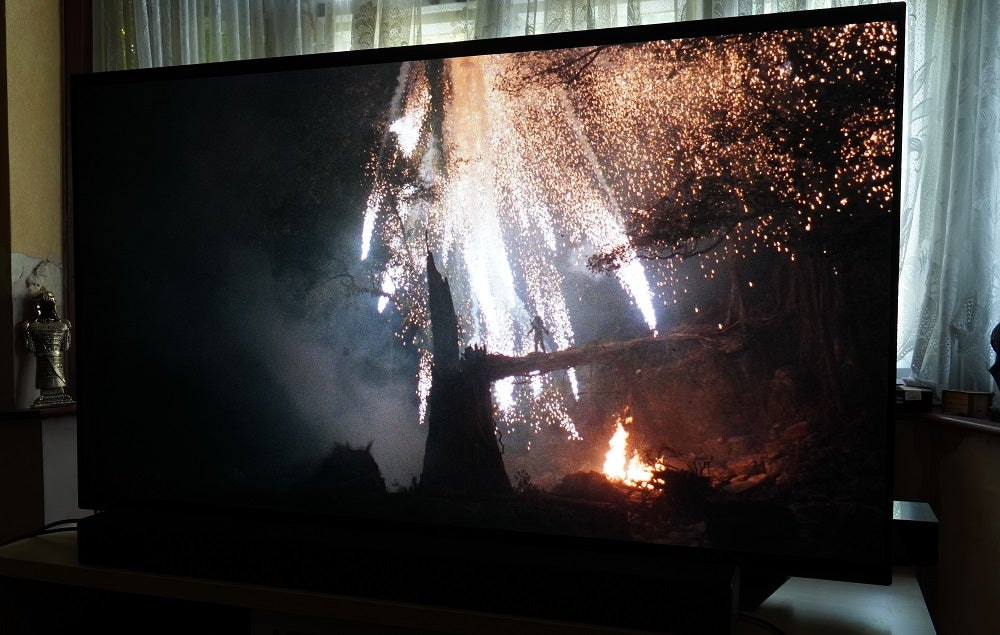
With Dolby Vision content there’s a rich, textured and almost creamy aspect to the picture. The rich and verdant greens of the Vietnamese jungle in Spike Lee’s Da 5 Bloods stand out impressively, but interiors have lush, detailed quality to them too. Complexions are well conveyed, black levels are sufficiently deep and near-black levels are revealing with fine detail levels fantastic. It’s a gorgeous image.
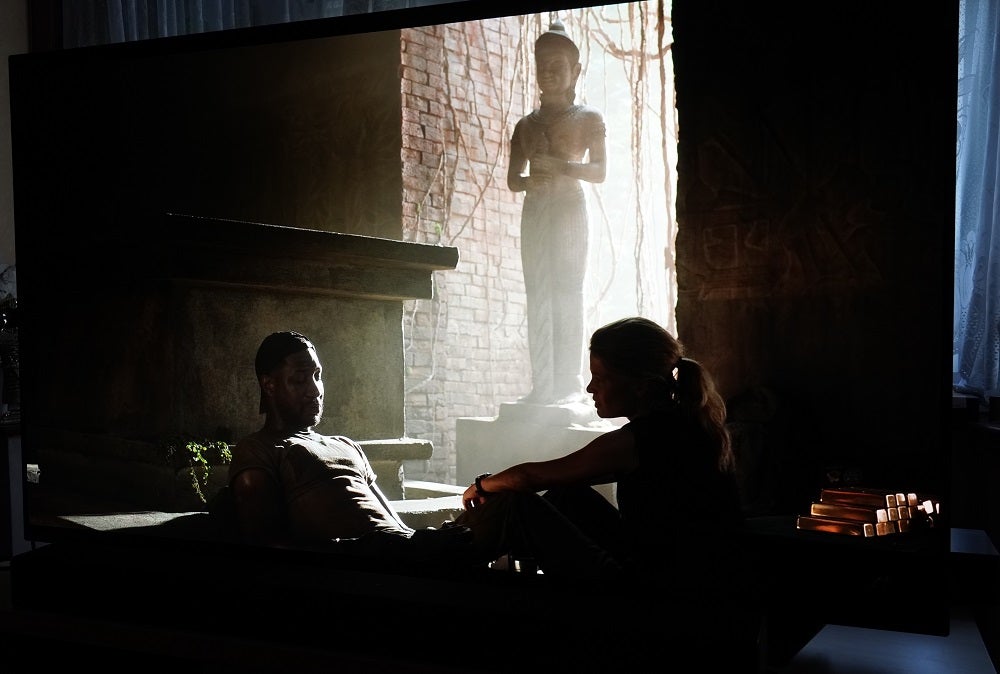
TruMotion can be disabled, but the Cinema Clear setting with Dolby Vision can’t. Nevertheless, it’s not a huge bother with the soap opera effect less prominent and slicker motion. In fact watching Sam Mendes’ 1917 on a Sony UBP-X700, the Dolby Vision Cinema Clear setting seems to help mask the one-shot conceit where objects and characters pass by the camera to stitch scenes together, while also retaining a richly cinematic feel.
There is some picture noise in fast moving shots, something that crops up in action films such as the Dolby Vision versions of the Mission: Impossible films. In terms of clarity and smoothness it’s a solid compromise.
Sound Quality
- AI Tuning adapts sound to living space
- AI Sound Pro focuses on voices
- Best suited next to a wall
The one rather ordinary aspect of the LG CX is its audio. Packing a 40W 2.2ch system, the CX offers ways to customise and tune the sound.
While it’s generally fine, Standard mode can be thin and lack depth. AI Sound Pro projects voices and bass better, but there’s a slight harshness to it, something I encountered with the SN7CY soundbar. AI Sound Pro also sounds narrower but serves up a more detailed performance. Cinema is the most expansive, while the OLED Surround setting adds more bite and bass.
AI Tuning adapts the LG CX’s audio for its surroundings (LG recommends that the TV is placed near a wall for best performance), and it does sound noticeably better once it’s gone through the process.
The CX also supports Atmos with compatible content, but it’s not as big or as powerful as the 2019 E9 or the 2020 GX. All this is a long-winded way of saying you should consider a soundbar.
Latest deals
Should you buy it?
You’re a purveyor of fine gaming While the input lag is not the quickest on the market, LG offers full support for the latest gaming features on consoles and for PC. There’s a reason why it’s the official TV for the Xbox Series X.
You prefer brightness over OLED’s contrast The LG CX isn’t the brightest TV, it’s not even the brightest OLED on the market. Samsung and Sony’s LCDs outgun it in department and that helps those TVs deliver further on HDR’s promise.
Final Thoughts
If you’re looking at the CX, it’s a fair assumption that you want an OLED over more conventional and brighter LCD or Samsung QLED. Advances in AI-enhanced picture quality, motion control and added customisation options – such as Peak Brightness – are welcome additions. The overall performance isn’t a huge leap over the C9, but that said, the CX is an excellent all-round package. Picture quality is outstanding, webOS is full of content, and the level of customisation and various AI-enhancements make this a sure-fire winner.








